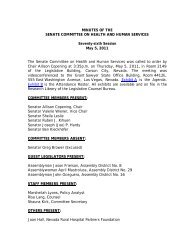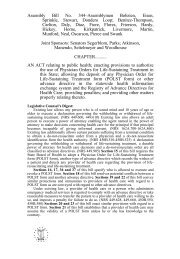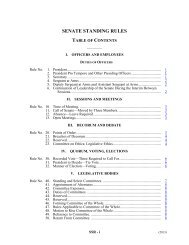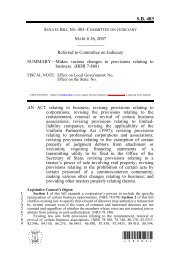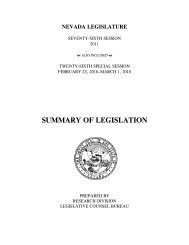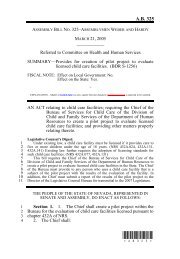Nevada Pre-Kindergarten Standards
Nevada Pre-Kindergarten Standards
Nevada Pre-Kindergarten Standards
Create successful ePaper yourself
Turn your PDF publications into a flip-book with our unique Google optimized e-Paper software.
4. Each Child is an Individual learner<br />
Each child is an individual. Each will grow, develop, and learn at his or her own pace. Because children’s<br />
development is due to both biological maturity and the environment, the rate of their development and<br />
learning varies. Therefore, actual age is not the best sign of where a child should be developmentally.<br />
Even though development and learning occur in an orderly way, development is often uneven. Some<br />
children will move ahead in language learning while being behind in physical or motor development.<br />
Others will demonstrate a skill one day and not repeat it for another month.<br />
A child’s genetic makeup may be related to healthy growth and development, but an environment<br />
that does not provide good nutrition or language experiences may slow down healthy growth. Severe<br />
disabilities affect normal growth and development as well. Children with disabilities may benefit more<br />
from early intervention that those without these disabilities.<br />
5. Development and Learning are Embedded in Culture<br />
Culture, the social context in which children learn, grow, and develop, is defined as the language,<br />
knowledge, beliefs, art, moral, laws, customs, and ways of living that are passed on to future generations<br />
(Cole, 1999). Social groups, the family, neighborhood, religious or ethnic groups within a society pass on their customs, values, or moral<br />
principles to the young.<br />
Beginning at birth, the culture socializes children to become members of a society. But, children are not just products of the culture they<br />
grow in. As children grow, they may decide what to model from the cultural influences they are exposed to, shaping their cultural context<br />
over time (NRC & IM, 2001).<br />
6. Family Involvement is Necessary<br />
To develop a close attachment between young children and their families demands family involvement. Teachers should consider each<br />
child’s unique circumstances, respect each family, and encourage involvement between families and preschools to help with a child’s<br />
academic success and later school achievement (NRC, 2001a).<br />
Family members and teachers must work together. <strong>Pre</strong>school experiences build on and extend what children learn at home. In turn,<br />
children’s learning in school is extended and continued in the home.<br />
7. Children’s Learning can be Clarified, Enriched, and Extended<br />
Appropriate early educational experiences can extend, expand, and clarify the ideas, concepts, language and social skills children gain<br />
spontaneously. With the guidance of highly knowledgeable, trained, and skilled adults who understand both children and what children<br />
need to know, children can learn more than they could on their own (Vygotsky, 1986).<br />
10




